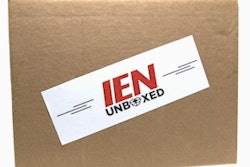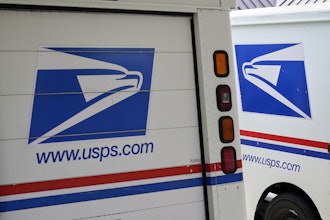
Over the last decade, buyer habits have changed drastically — and business-to-business (B2B) buyer habits are no exception. Buyers purchasing from suppliers, manufacturers, distributors, and wholesalers are no longer relying solely on sales teams to guide their purchases. Instead, their journey is becoming a mix of physical and digital interactions that result in a final purchase online.
According to our findings on how B2B buyers use online platforms:
- 74% transact or purchase.
- 64% research or browse.
- 56% request a quote.
And these aren’t one-time interactions. Data shows that buyers are purchasing online more and more frequently.
- Everyday: 15%
- A few times per week: 50%
- Once a week: 15%
- Once every 2 – 3 weeks: 9%
- Once a month: 6%
- Every few months: 5%
"The way B2B buyers shop is changing, and B2B merchants need to adapt. Buyers are turning to online channels to research, compare, and purchase products. B2B merchants need to have a strong online presence and offer a seamless omnichannel shopping experience to keep buyers loyal and converting, or risk losing market share," states Lance Owide, B2B General Manager, BigCommerce.
As the frequency of online purchases increases, buyers are expecting a seamless buying experience from their suppliers’ ecommerce websites. In order to determine those key buyer expectations, BigCommerce surveyed B2B buyers across the United States (US), United Kingdom (UK), and Australia (AU).
Throughout this article, we break down the buyer’s journey into three distinct categories — product discovery, shopping experience, and checkout — and highlight key data points from our research. We then provide key takeaways and actionable insights that can help your business succeed when selling online.
Discovery and Purchasing
In order to further understand buyer motivations and their discovery process, we first asked respondents how they find the products they buy, whether that’s online or offline. We then asked what they value most when looking at a product or listing, and what would motivate them to finally complete a purchase.
How do you typically find products to purchase for your business? (select all that apply)
- Internet search results:
- US: 66%
- UK: 68%
- AU: 62%
- Online marketplaces (e.g. Amazon)
- US: 50%
- UK: 40%
- AU: 29%
- Industry associations
- US: 42%
- UK: 43%
- AU: 43%
- Product catalog
- US: 43%
- UK: 41%
- AU: 41%
- Referrals
- US: 33%
- UK: 33%
- AU: 34%
- Online advertisements
- US: 35%
- UK: 35%
- AU: 25%
- Industry publications
- US: 29%
- UK: 34%
- AU: 27%
- Trade shows
- US: 23%
- UK: 26%
- AU: 25%
- Physical advertising
- US: 24%
- UK: 20%
- AU: 18%
- Social media advertising
- US: 23%
- UK: 22%
- AU: 18%
- TV advertising
- US: 14%
- UK: 13%
- AU: 3%
While digital platforms like internet search results and online marketplaces prove to be the most frequently used ways that buyers find products online, interestingly, 42% of global respondents discover products for their business from catalogs, signaling that catalogs are still a viable way of grabbing buyers’ attention.
The outlier in this data set is notably online marketplaces, where the US is the most reliant on online marketplaces for product discovery, and Australia is the least.
Channels for B2B Buyers
In the past year, which of the following purchase channels have you used to make B2B purchases for your business? (select all that apply)
- Supplier website/app
- US: 75%
- UK: 73%
- AU: 77%
- B2B marketplace
- US: 65%
- UK: 62%
- AU: 45%
- In-store/at vendor's warehouse
- US: 53%
- UK: 37%
- AU: 46%
- Sales representative
- US: 44%
- UK: 40%
- AU: 41%
- Social media channels
- US: 20%
- UK: 21%
- AU: 16%
Among the most used purchasing channels, supplier websites and apps as the most selected by a wide margin, which is promising for businesses that continue to invest in their ecommerce capabilities. B2B marketplaces and in-store/warehouse purchasing followed close behind. Interestingly, buyers in AU purchase significantly less through B2B marketplaces (45%) than their counterparts in the US (65%) and UK (62%).
To dig deeper, we then asked merchants who had purchased on an online marketplace which marketplace they used the most. Overwhelmingly, 51% of those respondents selected Amazon Business, with Walmart (23%) and Alibaba (19%) seeing significantly fewer selections.
Once broken down by region, there are significant differences in which marketplace buyers prefer. Buyers in AU utilize Amazon Business (38%) far less than the US (57%) and UK (58%). Instead, AU respondents utilized Alibaba (21%), while, unsurprisingly, Walmart Business was mainly selected by respondents in the US (39%).
Factors Impacting Purchasing Decisions
B2B buyers value the opinions of their peers. Ratings and reviews, along with peer recommendations are a major driver when it comes to making the decision to purchase. Interestingly, promotions and marketing ranked highly, signaling the importance of strong B2B marketing campaigns, while trade events may be further behind as events are still ramping up globally after coming to an almost complete halt, during the pandemic.
Even as online channels continue to play more of a role in B2B buying, respondents still showed a preference for physical media, such as product catalogs. To take advantage of this, merchants can use this as an opportunity to merge online and offline marketing tactics by including links (via QR code, etc.) in their physical marketing materials to their ecommerce store.
Additionally, while merchants should prioritize search engine optimization (SEO) and search engine marketing (SEM), social media channels prove to be a growing opportunity for merchants to meet their buyers at different points during their journey.
Keep in mind, too, that buyers still value a personal touch, as sales representatives remain critical to the sales process. Those who can effectively arm their sales teams with the advantages of online channels will have the most success in the coming years.
With 74% of B2B buyers using an ecommerce site to purchase products, it is clear that businesses should be investing in ecommerce technology that provides modern, user-centric experiences for their customers. Not only that, but technology that can also improve internal operations with sales and marketing teams. Remaining on decades-old legacy or bespoke platforms can prove to be costly, so now may be the right time to start looking for alternatives.
With 65% purchasing from marketplaces, but only 50% finding products there, it could suggest that buyers are finding products through search or direct websites and then heading to their favorite marketplaces to purchase. This tells us one very important thing: merchants across industries should be selling on Amazon Business. Depending on your region or industry, other platforms — like Walmart, Alibaba, or Rakuten — may also prove to be worthwhile.
Product pages have an array of best practices associated with them, from search engine optimization to product imagery. For B2B merchants, it may be beneficial to add customer ratings and reviews to that list.
Buyers showed that ratings and reviews were a major driver when it came to purchasing decisions, so encouraging buyers to leave reviews after their purchase through email or some other means may prove worthwhile. Monitoring these reviews and communicating with customers no matter their experience with your product is a must, so a third-party review software may be necessary to help high-volume.
What B2B Buyers Want from Ecommerce Sites
After understanding how buyers found their products, we then asked why they purchased through online channels, and what experiences they valued most during the shopping experience.
When thinking about purchasing products for your business, which of the following statements least and most drives your decision to shop via websites vs. other channels?
- Compare products and prices across competitors.
- Ability to customize my orders, select specific products and quantities.
- Save my purchase history, making reordering and tracking in the future easy.
- Make purchases at any time from anywhere.
- Easier to know what my total cost is going to be.
- Ability to see live inventory availability and out of stock items.
- Receive customized suggestions based on search/purchasing history
Pricing continues to be a sensitive area for B2B buyers, as a majority of respondents indicate that being able to compare products and prices drives their purchasing decision online, when compared to other value propositions.
While some value propositions were rated lower on average, looking at the data by region tells a different story. US and AU respondents showed a much greater preference for the ability to purchase anytime, anywhere, while UK respondents were most interested in seeing total cost and live inventory.
To understand potential pain points experienced by respondents, we asked them to rank a list of experiences from least to most frustrating. Inaccurate pricing and shipping costs were deemed most frustrating by respondents (40%). This highlights an opportunity for merchants to improve pricing accuracy and transparency across their sales channels. The top pain points for B2B buyers when shopping online were:
- Inaccurate pricing and shipping options.
- Slow website load times.
- Difficult to contact customer support.
- Complicated checkout.
- Poor search and navigation functionality.
- No real-time inventory information.
- Data privacy concerns.
- Lack of payment options.
- Limited flexibility of pricing/discounting
Buyers value different features depending on how often they make purchases. In aggregate, B2B buyers indicated that the most important features for their online purchasing experience were detailed product information and custom pricing and discounts. When broken down by business maturity level, businesses more than one year old showed less preference for advanced search and navigation while those less than one year old showed more meaningful preference for the feature. User experience features B2B buyers value most:
- Detailed product information.
- Custom pricing and discounts.
- Account management.
- Efficient reordering.
- Bulk ordering.
- Advanced search and navigation.
- Customizable quotes
Looking at the results based on respondents’ frequency of purchase, however, shows that detailed product information has an increasing preference as frequency of purchases decreases, perhaps indicating that buyers who make fewer purchases want to have more information to make a decision when they are ready. As frequency of purchase increases, however, B2B buyers display more preference for bulk ordering than those who purchase less often.
When respondents were broken down by levels of approvals needed to purchase, efficient recording and account management become highly preferred features, perhaps due to potential challenges faced when making new purchases.
Key Takeaways
Focus on basic website functionality to alleviate frustrations.
Merchants need to get the basics of a website right before moving on to bigger and better functionality. While there are some specific features that B2B buyers expect from their purchasing experience, many of these basic functions come from their experiences in the DTC space: accurate product and shipping information, a quick-loading website, and quality customer support, just to name a few.
Look for potential technology partners that may be able to help alleviate some of these stresses. Customer service, for example, could benefit from implementing a live chat function, allowing buyers to speak directly to a representative from the site. Merchants could also explore utilizing artificial intelligence (AI )to help reduce the burden on customer support.
Also, respondents shared that suggestions based on purchasing history were not a driving factor when it came to why they shop via websites over other channels. One could infer that this is because, by the time of purchase, buyers already know what they want, and instead are looking for the best price or most convenient way to shop.
Keep in mind this doesn’t necessarily mean that they are not interested in personalization, just that it’s not as much of a value add like it is for B2C shoppers. However, as more B2B merchants invest in personalization, that could change over time.
Right now, to align with B2B buyer priorities, merchants should ensure they have the basics of a good website experience before tackling advanced features, such as personalization.
Offer robust product information to help buyers make decisions. Whether you are selling B2B or DTC, product information — such as technical specifications, high-quality imagery, customer reviews, and real-time inventory — is vital for ecommerce success. The data shows us that B2B buyers across regions value and reward robust and accurate product information, especially as purchasing frequency decreases.
In order to manage product information for larger catalogs, merchants may benefit from investing in a product inventory management (PIM) system to help manage large quantities of product data.
Checkout Expectations
The checkout process is arguably the most important step in ecommerce. Even the slightest bit of friction can cause a buyer to abandon their cart. Respondents in this section were asked about how they paid for products, as well as the pain points they experience during the process, and how those pain points can impact their final purchase.
Unsurprisingly, credit and debit cards are the most-used payment methods across regions, where more traditional B2B payment methods, like automated clearing house (ACH) and purchase order (PO) invoicing, follow closely behind.
Interesting outliers in this data set include both electronic (21%) and physical checks (18%) used by buyers in the US. This may be because buyers in the US show more propensity to purchase in-store or at a warehouse than their counterparts in the UK and AU, as well as the differences between US and UK/AU banking systems. B2B buyers most-used payment methods.
- Credit card
- US: 80%
- UK: 73%
- AU: 77%
- Debit card
- US: 49%
- UK: 51%
- AU: 41%
- ACH/direct entry/bacs/direct debit
- US: 39%
- UK: 44%
- AU: 31%
- PO invoicing
- US: 28%
- UK: 30%
- AU: 35%
- Digital wallets (Apple Pay, Google Pay, Amazon Pay)
- US: 31%
- UK: 30%
- AU: 23%
- Third-party payment apps (PayPal, Venmo, Cash App, etc.)
- US: 32%
- UK: 26%
- AU: 24%
- Term through third-party (TreviPay ,Balance, Credit Key, Resolve, etc.)
- US: 14%
- UK: 13%
- AU: 8%
- Electronic check
- US: 21%
- UK: 8%
- AU: 8%
- Physical check
- US: 18%
- UK: 6%
- AU: 8%
- Cryptocurrency
- US: 10%
- UK: 8%
- AU: 5%
To determine the top causes of abandoned carts, participants were asked, "Which of the following is MOST likely to prevent you from completing a checkout?":
- Technical issues: 31%
- Lack of secure checkout: 23%
- Shipping and delivery: 17%
- Complicated checkout process: 15%
- Lack of payment options: 8%
- Lack of payment term options: 6%
Surpassing all other selections by a fairly wide margin, the number one reason B2B buyers abandoned their carts was because of technical issues faced at checkout (31%). This, along with a complicated checkout process (15%), signal the importance of a smooth, effortless checkout experience.
When looking at the data from a regional perspective, respondents in the UK actually chose lack of secure checkout (30%) over any other option — an interesting point that may benefit UK merchants to pay attention to. Merchants in this region may want to add an extra layer of security to their checkout process or additional trust signals to ensure buyers feel that their information is safe and secure.
Buyers need accurate product and shipping information before making a purchase. Respondents overwhelmingly value total and accurate pricing information over other features. This reinforces previously mentioned data that shows that B2B buyers are most concerned with pricing and shipping costs.
While not showing high preference overall, respondents with higher levels of approvals (10+ approvals) showed some preference for an auto-save cart feature, signaling the importance of this function to buyers who most likely will be making slower purchase decisions, or will need to come back to their cart later during the approval process.
Similarly, auto-renew or subscribe-and-save options showed increased preference from respondents with higher approval levels, as well. This may be because of the fact that these specific features can help reduce the amount of time the approval process takes, particularly if the same order or purchase has been approved before.
- Which of the following checkout experience features least and most resonates with your needs?
- Total price display
- Multiple shipping options
- Auto-save cart
- Auto-renew/subscribe and save options
- Optimized for mobile
- Multi-currency pricing
Keep your checkout fast, simple, and secure. Buyers expect basic functionality from a vendor’s website — especially when it comes to checkout. As ecommerce evolves, the lines between B2B and DTC ecommerce are blurring, and buyers are bringing their expectations from the DTC space and expecting the same from B2B merchants: fast load times, working links, multiple payment methods, and more. If you’re not meeting your buyers’ most basic needs, chances are they can — and will — get a better experience elsewhere.
A complicated checkout process can also drive buyers to your competitors. By keeping checkout limited to a single page, or allowing buyers to save their carts and return to them at a later time, merchants can remove unnecessary friction from the buying process and keep buyers happy at every stage of their journey.
And, although checkout security was the main concern of UK respondents (30%), lack of a secure checkout process is still a concern for buyers in the US (20%) and AU (21%). Merchants must be able to protect their buyers’ sensitive information. Once buyers feel a sense of security, they will reward merchants with purchases.
Advancing Digital Maturity to Keep Pace
After surveying buyers across the US, UK, and AU, our research shows three major trends B2B buyer expectations, each driven by a continued blurring of the lines between DTC and B2B ecommerce.
- Buyers expect — and reward — basic online functionality. Respondents have indicated that the most basic ecommerce functionality (accurate product and pricing information, auto-saving carts, etc.) is extremely important when it comes to their shopping experience. A majority of respondents indicated that fast, frictionless experiences were preferred, which comes as no surprise. This was especially true for buyers with multiple levels of approval, which is common in the B2B space. Technical issues and questionable checkout security can both cause buyers to abandon their carts, which reiterates the importance of basic ecommerce features and functionality.
- Buyers want more transparency when it comes to products and pricing. B2B buyers want to see prices and product information displayed clearly and transparently on ecommerce websites. This was indicated by both their value proposition preference and their user experience feature preference of total price display. No matter what economic factors are in play, it’s important to remember that price will be at the front of your shoppers’ mind. This is a valuable takeaway for merchants who may unintentionally hide shipping costs or taxes until the final stages of checkout. So be clear and transparent about the price of your products, and integrate a shipping tool that can allow your customers to see the full price of your goods before they decide to make a purchase.
- Buyers expect a frictionless checkout experience. Buyers’ ecommerce experiences from their personal DTC purchases are spilling over into the buying they are performing at work. While certain B2B-specific functions are necessary to meet these expectations — PO invoicing, ACH, bulk ordering, etc. — B2B merchants need to provide DTC-like functionality where possible. This includes single page checkout, mobile optimization, an uncomplicated checkout process, and especially security.
As B2B buyer expectations evolve, it is important for merchants to meet — and even exceed — them in order to succeed. It is also important for merchants to use an ecommerce platform that provides a solid foundation for basic functionality and the framework for future growth.
Meet buyer demands with a more intuitive, customizable ecommerce platform — built for the unique needs of B2B. With BigCommerce B2B Edition, you’ll get powerful tools and features that help you exceed buyer expectations, including a modern buyer portal, account management, seller quoting and discounting, sales rep masquerade, and more.
About the Authors
Shelley Kilpatrick
Shelley Kilpatrick is an accomplished content marketer who creates compelling, original content designed to educate and empower enterprise ecommerce businesses. She is currently Manager of Content Marketing at BigCommerce where she leads a world-class team of content writers and strategists. Prior to joining BigCommerce, she worked on marketing teams spanning various industries from eLearning to Millennial and Gen Z research.
Reed Hartman
Reed Hartman is a Content Marketing Manager at BigCommerce. He has over ten years of experience in the writing and publishing industries, and uses that experience to craft original, thought-provoking content for a variety of audiences and verticals. Prior to BigCommerce, he wrote content and copy for a number of industries in the agency space, including beer and wine, education, medical, and technology.
About BigCommerce
BigCommerce (Nasdaq: BIGC) is a leading software-as-a-service (SaaS) ecommerce platform that empowers merchants of all sizes to build, innovate and grow their businesses online. As a leading open SaaS solution, BigCommerce provides merchants sophisticated enterprise-grade functionality, customization and performance with simplicity and ease-of-use. Tens of thousands of B2B and B2C companies across 150 countries and numerous industries use BigCommerce to create beautiful, engaging online stores, including Ben & Jerry’s, Molton Brown, S.C. Johnson, Skullcandy, Sony and Vodafone. Headquartered in Austin, BigCommerce has offices in London, Kyiv, San Francisco, and Sydney.























